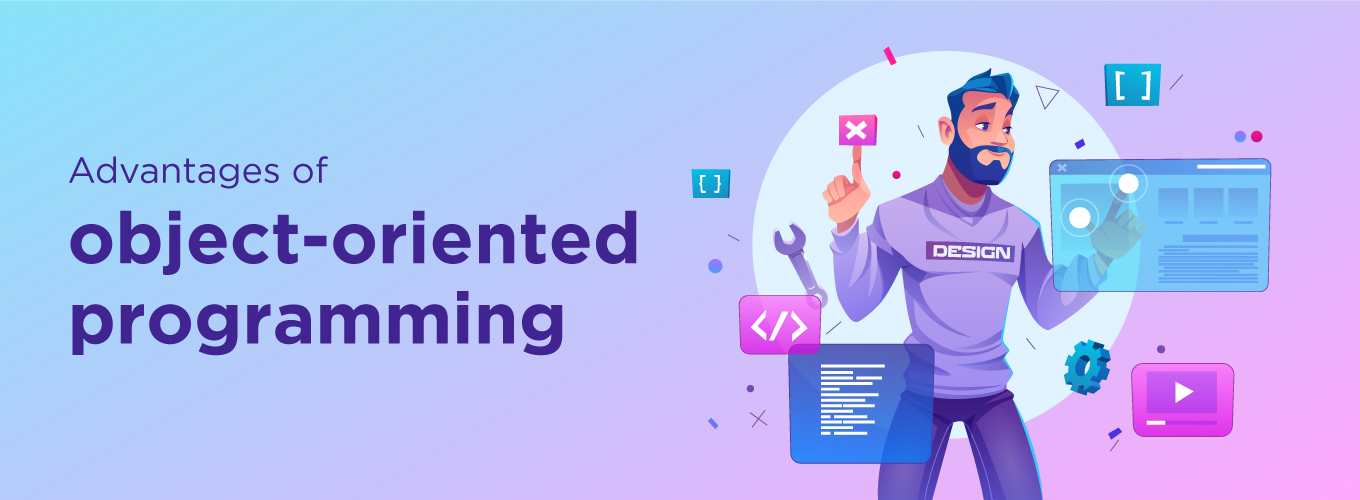7 Advantages of Object-Oriented Programming
Nowadays, several programming and data science roles have OOP listed as a requirement in the the job post. OOP promises better quality software and reduces maintenance costs. Hence, learning OOP can considerably increase your employability as a Software Developer or a Data Scientist. But what exactly is OOP?
Table of Contents
Object-oriented programming (OOP) is an approach that uses the concept of objects and classes. A typical program written using the OOP approach will have reusable blocks of codes named classes. The classes are further used for creating objects. Another way of understanding OOP is to look at it as a computer programming model that arranges software design around data, or objects, rather than function or logic. A data field with a specific attribute and behavior is called an object.
Object-oriented programming offers many benefits to developers. So OOP is preferred over other approaches. Java, Python and C++ are programming languages that follow OOP. Specifically, software development for mobiles, and for web applications, rely on OOP.
Simply, from a technical point of view, when OOP is used in a code it enhances the reusability and the readability of that code.
Key advantages of OOP
Troubleshooting is simpler
When a bug occurs in a code, users don’t know where to look to find it. Or how to find it. This occurs all the time with standard programming languages. But with OOP, the user is able to zero in on the bug. This is because they know where exactly to look for in the code to find the bug, the error. In OOP, time need not be invested in searching for the bug in other sections of a code. The error will show up exactly where the bug lies in the code. An example is of a mobile phone screen turning blank. The reason is a motherboard crash. There is no need for reviewing all the codes in the mobile software application. The error in the mobile phone is showing up with the screen turning blank. This is how OOP makes troubleshooting easier. This is achieved through an OOP concept called encapsulation.
Making codes reusable
Another key concept in OOP is inheritance. Technically, this means that the same attributes of a class need not be written repeatedly. Inheritance helps create a child class in the code that inherits the attributes of the parent class. For instance, in a cap class object, one person wants a black cap and another wants a red cap. Both objects have a commonality. Both are caps in different colors. So, the code need not be rewritten. The attributes of the class of one can be inherited for the class of the other. OOP makes it possible for reusability. This saves time and the same code can be reused.
Enhanced productivity
Because codes are reusable, the length of codes to be written is reduced. This saves time. And so it impacts productivity positively. Additionally, OOP provides more libraries; this makes programs accessible. When a code is placed in a library, it obviates the need for manual programming. Therefore, the scope for error is reduced significantly.
Data redundancy
When data is repeated twice it is called data redundancy. This means the data appears more than one time. This is considered a key advantage of OOP. If a user wants functionality for all classes, all the user has to do is to inherit the functionality from one class to other classes. This saves the time and effort required to repeat a mundane task.
Making code flexible
OOP offers another stellar concept called polymorphism. Let us understand this concept through an example. A person can change their behavior based on their environment. For instance, a person may behave like an employee in their office and as a passenger on an airplane. The person is the same. But their behavior changes based on the environment. This explains the concept of polymorphism and flexibility. In the context of OOP this means that a code can appear in more than one form. This makes OOP offer developers flexibility, simplicity and extensibility.
Problem-solving
OOP makes it possible for a problem to be broken into multiple parts. This aids in problem-solving. Breaking down a problem into smaller pieces is good programming practice. An OOP feature, the code of the software application is broken down into smaller parts, into smaller pieces of the object. Once the problem is solved this way, the broken pieces of the code can be used again to solve other problems.
Increased security
Another concept that OOP uses is called abstraction. Only a required amount of data is shown to the user. All the data is not shown. This enhances security. In Java, this concept helps avoid repetitive code. Encapsulation further helps all data from getting accessed by different classes in the system. The coding base in OOP is centralized. So OOP offers easy-maintenance coding.
Conclusion
All the features discussed showcase the benefits of OOP.
In summary, when OOP is used:
- Users can build modules that communicate with each other efficiently and seamlessly. This removes the need to write code again from the beginning each time. This saves time and enhances productivity.
- OOP breaks down problems into bite-sized code. This enables problem-solving in a swift and effective manner.
- OOP saves time and, therefore, money. This saves programming costs.
- The OOP system of languages can be easily upgraded from smaller to larger systems.
- Multiple instances of the same object can be achieved without them clashing or interfering with each other.
These are the reasons why OOP is very sought after and is widely used in software development. If anyone wants to grow their career in software development then mastery in OOP is a must-have skill.
Ready to start your job hunt? Check out the Xpheno Job Board today!










